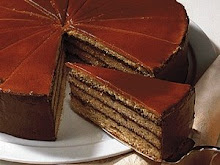I never liked chicken salad. Nor did I enjoy "curry powder" (the stuff my mother used to have in a plastic McCormick's shaker that lived in our pantry for years).
Recently, however, I started eating meat again (an experiment) and have been poaching a few chicken breasts at a time in order to use the meat on (green) salads. I had about a 1/2 a chicken breast leftover the other day though and inspiration absolutely struck. Chicken salad! But new and improved! I had the ingredients I needed: soft and nutty whole wheat bread, fresh green leaf lettuce and yogurt. Yes, yogurt.
I shredded the chicken and dumped it in a bowl with a squeeze of lemon, a splodge of plain yogurt (about a Tbls.), salt, pepper and a sprinkling of cumin. Then I added a dash of my curry powder (the stuff that I create from whole seeds bought at the co-op, that are toasted and then ground - this stuff lives in my pantry in a glass jar to seal in freshness and never lasts more than a month or two). I mixed it up and slathered it onto lettuce lined slices of bread. It is really good. Bright, fresh-tasting, tangy, lemon-y, chicken-y. Because I used yogurt instead of mayo it isn't heavy or guilt-inducing. This super simple chicken salad is my new recipe darling - I've had it 3 times in the past two weeks!
1/2 chicken breast, shredded or diced
1-2 Tbls. plain yogurt
1/4 lemon, juiced
large pinch each salt, pepper, cumin, curry powder
2 slices bread
2 leaves lettuce
You don't really need instructions do you? Enjoy!
Tuesday, June 23, 2009
Wednesday, June 3, 2009
Herbaciousness

All foodies know about the magic of herbs and spices. We learn to covet these lovely, fragrant powders and leaves, and we actively use them; a pinch here, a dusting there, a shower on top to "spice" up our meals ("herb" up?). But those outside the foodie realm seem to be mostly in the dark about the gloriousness of herbs and spices. They frequently don't even know the difference between an herb or a spice, let alone how to use it and what dishes each one complements. I recently came up with the theory (I'm full of theories) that the reason is that herbs and spices are just so damn expensive that people don't have the opportunity or desire to burn through piles of the stuff, experimenting and learning.
Except that they're NOT that expensive...well, at least not when you live near a co-op or have access to a garden or farmer's market. Co-ops allow you to buy miniscule amounts of the stuff, or just as much as you need for a recipe, allowing you to dabble to your hearts content without breaking the bank. This fact has had a huge impact on my cooking, allowing me to make delicious, richly flavored food without a lot of added cost. For example, last week I bought $0.37 worth of thyme. Everyone can afford $ 0.37. And of course, if you have access to fresh herbs straight from the ground, well, you've been smiled upon by universe (as long as you don't have to buy the sad ones in the plastic containers at the grocery chains).
Anyway, my point. Wait, what was it? Oh yes. Herbs and spices are that special, not-so-secret ingredient that sets my cooking apart. It is the element that raises simple dishes to new heights (eggs, vegetables, pasta), and is the potent background that lends complexity to recipes that rely on levels of flavors for greatest impact (usually ethnic or long-cooking foods).
What I'd like to offer then is a sort of herb tutorial here; successive posts focusing solely on one herb or spice, talking about its flavor, properties, origins, and complementary foods, and then offer a recipe/suggestion that really highlights its attributes.
But first things first; the difference between an herb and a spice. Here's the simplest explanation I can give (of course there are finer points and exceptions but we'll address those later):
Herbs are leaves.
Spices are everything else (stems, seeds, roots, even bark as is the case with cinnamon).
Herbs are typically used whole and fresh.
Spices are mostly dried and ground into powders.
Straightforward examples:
Herb - parsley
Spice - black pepper
Less-straightforward examples (for my amusement):
Herb - chervil
Spice - asofoetida
So, that was herb tutorial #1.
Stay tuned.
Subscribe to:
Posts (Atom)
